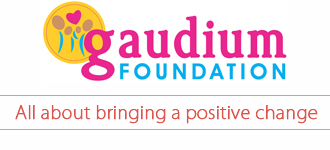Though I believe in a balanced diet, there are times when we need to focus on specific nutrients as their deficiency can be a cause of concern. With exam fever in the air, I decided to write about “iron”, a nutrient that can really contribute to a child’s growth and performance! I am not talking about deficiency among children whose families are prone to malnourishment due to lack of access, this is about children from well to do families! A review of studies done in middle and high income families show that “Anaemia” due to iron deficiency is prevalent among anywhere between 14 to 88%! Also many teenage girls are at risk for iron deficiency when they hit puberty. The Hindu (March 9 th 2013) quoted the National Family Health Survey, mentioning that one out of two adolescent girls suffer from aneamia! So this is an issue that can very well be present in our households!
Why is this happening and why is iron so important?
The answer to the first question is probably known to all of us – it is because children these days tend to eat more “energy dense food” (empty calories) which are not necessarily “nutrient dense”. Iron is a nutrient that is needed to make hemoglobin, the oxygen-carrying component of blood (red blood cells). Red blood cells circulate throughout the body to deliver oxygen. So if your child does not get enough iron, his body will not get enough oxygen to perform its routine functions. This can translate into lack of energy, feeling tired quickly and even inability to focus and study!
Iron is key for mental growth and development of children. Reduced performance can occur even in relatively mild forms of this deficiency, resulting in lower physical work capacity (poor stamina for play), poor school productivity and reduced concentration in older children! Children who are anaemic as toddlers can have impaired performance in tests of language and motor skills, equivalent to a 5 to 10 point deficit in IQ! Last, poor iron status means poor immunity and children will be more prone to infections. So it’s important for kids and teens to get enough iron in their daily diets.
What are some common symptoms of iron deficiency anaemia?
Fatigue or weakness;
Poor appetite
Shortness of breath
Dizziness or complaints of being lightheaded
Headache
Irritability
Frequent infections
The symptoms may not appear immediately, because the body’s iron store is depleted slowly, but as anemia progresses, some of these symptoms start appearing. So if you are generally concerned about your child’s eating habits, it may be worthwhile to check his or her iron status and if your child has any of these symptoms, do talk to your doctor. A simple blood test to check for iron status and prescription of iron supplements if necessary is all that is needed.
Iron in everyday diet
The recommended intake for children 4-9 years old is around 13-16 mg of iron and for adolescents between 21-28 mg. This may not seem high and you will be surprised to know that the body’s requirement is much lower only around 0.5 mg for children and 1.5 mg for adolescents! Our diets are unable to meet even this low requirement, as iron from our diets is poorly absorbed. Hence there is a big gap between what is recommended and what is actually required! Iron from meat sources, known as “haeme iron” is more easily absorbed by the body than iron from plant foods. So if your family habits allow meat dishes you can relax definitely. Just ensure your child eats meat dishes 2-3 times a week or as the practice may be.
Other foods which are good sources of iron are:
Eggs – if your child does not eat meat but eats eggs it will help; 2 eggs can give almost 7 -12% of the recommended iron intake depending on the age of your child
Pulses and lentils like rajmah, back eyed beans (lobhia/karamani), soyabean, dried peas, horse gram
Dried fruits like dates; date syrup in milk, cereals
Almonds and cashewnuts
All green leafy vegetables – spinach/palak/keerai/soppu
Iron fortified cereals/biscuits – this is not on top of my list as the form of iron used in processed foods is not readily absorbed by the body. Though it is good for the product as it does not change taste and colour it is not necessarily good for our body, unless the food manufacturer claims to use a “more available source” of iron!
Tips to increase iron intake or absorption
If your child is a milk lover, limit his/her milk intake to a maximum of 700 ml, as excess calcium can interfere with iron absorption
Serve iron rich foods along with foods contacting vitamin C like oranges/ orange juice, tomatoes
If older children are in the habit of drinking tea, ensure a gap of a couple of hours after a meal as compounds in tea can affect iron absorption!
